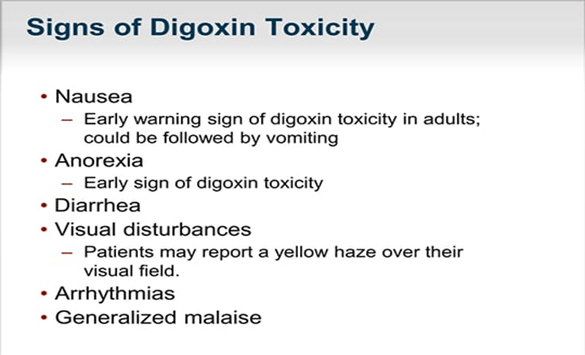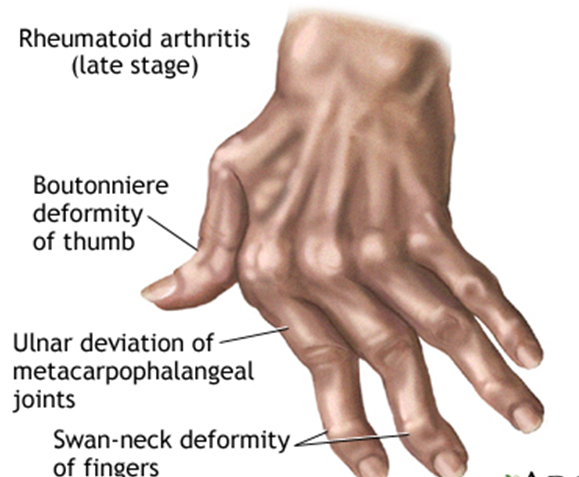A nurse is assessing a client who has heart failure and is taking digoxin. Which of the following findings should the nurse identify as an early indication of medication toxicity?
Visual disturbances
Sudden weight gain
Potassium 4.4 mEq/L
Insomnia
The Correct Answer is A
Choice A Reason:
Visual disturbances is the correct findings. In individuals taking digoxin, visual disturbances such as blurred or yellow-tinted vision can indicate early signs of medication toxicity. This symptom often requires prompt medical attention, as it can precede more severe complications.
Choice B Reason:
Sudden weight gain is not correct. While weight gain can be a symptom of worsening heart failure, it's not typically associated specifically with digoxin toxicity. It's more commonly related to fluid retention in heart failure.
Choice C Reason:
Potassium 4.4 mEq/L is not correct. This potassium level is within the normal range. Digoxin toxicity can be exacerbated by low potassium levels, but a normal potassium level doesn't directly indicate digoxin toxicity.
Choice D Reason:
Insomnia is not a typical early sign of digoxin toxicity. It's more commonly associated with issues like difficulty sleeping rather than being a direct symptom of digoxin toxicity.

Nursing Test Bank
Naxlex Comprehensive Predictor Exams
Related Questions
Correct Answer is A
Explanation
Choice A Reason:
Bone loss is correct. Prednisone, a corticosteroid, can lead to decreased bone density (osteoporosis) over extended periods of use, particularly in older adults. This adverse effect increases the risk of fractures and bone-related issues due to the drug's impact on bone health and calcium absorption.
Choice B Reason:
Liver toxicity is incorrect. While prednisone can affect liver function tests in some cases, it is less commonly associated with significant liver toxicity compared to other medications. However, liver function should be monitored during prolonged use.
Choice C Reason:
Hemolytic anemia is incorrect. Prednisone is not typically associated with causing hemolytic anemia as an adverse effect.
Choice D Reason:
Hypoglycemia is not a common adverse effect associated with prednisone use. In fact, prednisone can elevate blood sugar levels and may lead to hyperglycemia or exacerbate diabetes in susceptible individuals.

Correct Answer is C
Explanation
Choice A Reason:
"Limit your sodium intake." Is incorrect. Sodium restriction might be appropriate for some cardiovascular or renal conditions, but it is not specifically related to theophylline use.
Choice B Reason:
"Restrict milk products." is incorrect. Restricting milk products is not a necessary dietary consideration for theophylline. However, consuming high-fat dairy products may delay the absorption of theophylline, potentially affecting its effectiveness.
Choice C Reason:
"Avoid caffeinated beverages." Is correct. Theophylline is a bronchodilator used to treat respiratory conditions like asthma or chronic obstructive pulmonary disease (COPD). It belongs to the class of methylxanthine medications and acts similarly to caffeine. Consuming additional caffeine through beverages like coffee, tea, or certain sodas can increase the risk of adverse effects associated with theophylline, such as increased heart rate or nervousness. Hence, avoiding caffeinated beverages is advisable to minimize the risk of exacerbating these effects.
Choice D Reason:
"Take the medication with meals." Taking theophylline with or without meals is typically acceptable, but it's essential to maintain consistency in timing and avoid significant changes in dietary habits that might affect its absorption or metabolism.
Whether you are a student looking to ace your exams or a practicing nurse seeking to enhance your expertise , our nursing education contents will empower you with the confidence and competence to make a difference in the lives of patients and become a respected leader in the healthcare field.
Visit Naxlex, invest in your future and unlock endless possibilities with our unparalleled nursing education contents today
Report Wrong Answer on the Current Question
Do you disagree with the answer? If yes, what is your expected answer? Explain.
Kindly be descriptive with the issue you are facing.
